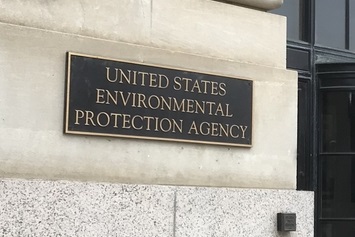In draft letters dated October 16, 2019, and addressed to EPA Administrator Andrew Wheeler, the chair of the Agency’s Science Advisory Board (SAB) raised substantive concerns about four major EPA regulatory proposals. All the letters, which the SAB recently posted on its website, have a header stating, “This draft has not been reviewed or approved by the chartered SAB and does not represent EPA policy.” Even with that caveat, the sharp bite of the criticisms in the letters is remarkable given that the Trump administration and the two individuals the president appointed to head the EPA have put a strong emphasis on reforming the memberships of the Agency’s science advisory boards, as well as how science reviews are conducted.

Jerome460 / Shutterstock.com
The draft letters note at the start that “as part of its statutory duties, the SAB may provide advice and comment to you on the scientific and technical basis of certain planned EPA actions,” which include “advice and comments on the adequacy of the scientific and technical basis of the proposed action.” The letters are not critical of all the science used as the bases for the proposals, and some provisions are described as scientifically sound based on the available research and studies. But the general tenor of the letters is that the SAB finds important parts of the proposals unacceptable from a scientific perspective.
- Mercury and Air Toxics Standards (MATS) for Power Plants.The EPA here proposed to amend the MATS, one of the Obama administration’s major actions to reduce emissions of hazardous air pollutants from fossil fuel power plants. The SAB reminds the EPA that in 2018, it had reviewed the Agency’s approach to amending the rule and recommended additional analysis. For example, perhaps the major concern with mercury air pollution is the impact deposition of mercury into water bodies has on the formation of methylmercury in fish. But the SAB draft notes that the EPA’s “fisheries model is poor in that the size of the fish is not a variable.” Other weak areas in the EPA’s analysis include the absence of an accounting for exposure to mercury from all sources, as well as analysis of evidence that methylmercury has been found in prehistoric fish from 2,000 years ago at levels at or above current levels.
- The Safer Affordable Fuel-Efficient (SAFE) Vehicles Rule for Model Years 2021–2026 Passenger Cars and Light Trucks. This proposal would freeze the federal fuel efficiency standards at 2020 levels, thereby loosening the stringency of standards issued by the Obama administration. According to the SAB, the models the EPA used in writing the proposal, as well as sales and scrappage equations, “have weaknesses in their theoretical underpinnings, their econometric implementation and, in one case, possibly in the interpretation of their coefficients. Together the weaknesses lead to implausible results regarding the overall size of the vehicle fleet, predicting that an increase in vehicle prices due to regulation will cause the fleet to grow substantially when it would usually be expected to shrink.” The SAB also took issue with the part of the proposal that would eliminate California’s waiver, which allows the state to promulgate its own fuel efficiency standards, without considering information regarding California’s zero-emission vehicle (ZEV) program, other state ZEV programs, and other policies related to electrification.
- Strengthening Transparency in Regulatory Science.Under this proposal, the EPA would clearly identify and make available to the public all studies (or other regulatory science) relied upon when it takes any significant final Agency action. The SAB has many reservations with this action. For example:
- The requirement for the Agency to clearly identify and make available to the public all studies could be cumbersome and impractical if some studies were used in a weight of evidence consideration but not used to determine specific regulatory endpoints.
- The proposal uses terms such as “dose response data and models” and “pivotal regulatory science” without providing adequate definitions.
- The proposed requirement that “raw data” be made available for public inspection is vague and, as a result, can be interpreted in different ways.
- If implemented as proposed, the rule can entirely exclude from the regulatory process confidential data owned by universities or societies.
- Defining the Scope of Waters Federally Regulated Under the Clean Water Act. Following the Trump EPA’s withdrawal of the Obama EPA’s definition of Waters of the United States (WOTUS), this proposal was part of the second step to promulgate a narrower definition of WOTUS. The SAB is particularly concerned that the EPA has not incorporated the Agency’s 2015 connectivity report into the proposal. Connectivity refers to the biological, chemical, and hydrologic impacts small streams, wetlands, and open waters have on larger downstream waters such as rivers, lakes, estuaries, and oceans. “The report illustrates that a systems approach is imperative when defining the connectivity of waters, and that functional relationships must be the basis of determining adjacency,” the SAB states. “The proposed rule offers no comparable body of peer reviewed evidence to support such a departure, and no scientific justification for abandoning the more expansive view of connectivity of waters accepted by current hydrological science, which has advanced substantially since the Clean Water Act was enacted decades ago, as reflected in the Connectivity report.”